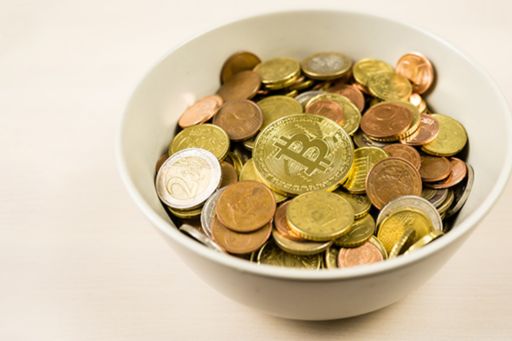Crypto economics
Crypto economics
Take a deeper dive into cryptocurrencies by reading about the history of currency innovation, bubbles and the economic value of crypto.

Money has continued to evolve since the beginning of civilization. In this section, we provide a deeper dive into the history of money and the economic value of crypto to help assess if crypto is a money evolution, a custody evolution or a record keeping evolution.
Are cryptoassets truly currencies?
What is in a name? Sometimes it is aspiration. That is the case for the moniker currency in cryptocurrency. Cryptocurrency is a remarkable and innovative leap forward, but the leap is not far enough yet to meet all the criteria for a true currency. Furthermore, the jury is still out on the utility of cryptocurrencies, and deliberations could take several years, if not more. While some people expect cryptocurrencies to take over from government-issued fiat currency, there are still big hurdles before they can attain mainstream global acceptance.
In order to meet the definition of a currency, three criteria must be met: unit of account, store of value, and unit of exchange. Many people believe cryptocurrencies pass the first test; they are units of account. One can measure, in units, the amount of crypto purchased or used. This is critical, as currencies are the basis for accounting. One holds inventory of 10 widgets at a purchase price of 10 Bitcoin each. Or one sells 10 widgets at a profit of 4 Bitcoin each. Or one buys 10 bonds at 10 Litecoin each and marks the value to market each day in currency units.
To fulfill the requirements of store of value, cryptocurrencies must be much more stable. Consider for a moment extending a person or entity a loan in a cryptocurrency. The value is too unstable at the moment to be assured repayment. Under these conditions, neither lenders nor borrowers would be willing to take the risk of transacting in cryptocurrencies. After all, extending credit in a currency that risks significant devaluation, or borrowing if the value appreciated beyond the borrower’s ability to pay, would be a fool’s errand.
As a medium of exchange, a currency must have ubiquitous acceptance within a large enough jurisdiction to be practical. The larger the jurisdiction, the greater the efficiency (or the greater the reduction of friction). For example, the creation of the Euro reduced friction within the European Union (the trading block) and increased trade and per capita GDP. The use of a reserve currency also reduces friction. The dollars is the world’s reserve currency. In addition to commodities being priced in dollars, dollar invoicing is used in 4.7 times the U.S. import share. This elimination of a foreign exchange transaction in trade reduces friction.
History of currency innovation
So, if cryptocurrencies are not truly currencies, what are they and what economic benefits do they possess? To answer this question, it is helpful to consider a brief history of money and the various innovations that have occurred over the millennia. All of the innovations that have endured had one thing in common: they reduced friction and, by doing so, increased economic activity.
Reducing friction is a key element of the history of currency innovation. The first unit of account reduced the friction that was inherent in barter. For example, if one had berries and wanted meat, in order for the exchange to take place it was necessary to find a person with meat who was looking for berries. The introduction of currency allowed berries to be
exchanged for money, which could then be used at any future date to purchase anything. The first currencies: shells, cocoa beans, salt, barley and the like, all suffered from a common problem: the units were not infinitely divisible and they could be destroyed or lost.
In the seventh century B.C., Lydia (what is now modern day Turkey) created the first metal coins. This was such a significant innovation in the use of money that it was quickly copied and used across many countries. Coins with the same mark were uniform, they were worth the same amount in large jurisdictions and everyone agreed on what they were worth. This saved time on weighing chunks of metal or counting cocoa beans, and it decreased the probability of cheating. During the Renaissance, the Italians came up with a new innovation: credit. This made Italian money (florin from Florence or ducat from Venice) the reserve currency of the day. In this way, one can see that currency markets illustrated the first instance of what is known today as the winner take-all effect and the network effect.
We cannot stress enough the importance of trust. It is essential so that currencies can facilitate not just current transactions but future transactions by being a means of accumulating savings and acquiring credit. Paper money was invented in China in 740 B.C., but it took longer to become more ubiquitous than coins or more modern inventions like electronic money and credit cards. The reason for the delay? Trust. Specifically, the lack of it.
Creative destruction and the value of bubbles
In Europe, ubiquitous use of paper money thrived when credit became widely used. While the Italians were innovators in finance, creating the dual-entry accounting system, and introducing credit, the Dutch, with their large colonial holdings and trading empire that spanned the world, took the introduction of credit to the next level. The level of bubbles.
So, is crypto a bubble? And if it is a bubble, does it have lasting value? Some bubbles create lasting value because excess liquidity is pumped into ideas so innovative that they would not otherwise receive funding. Think of the dot-com bubble. This type of bubble falls under the purview of the famous economist Joseph Schumpeter who coined the phrase “creative destruction.” This is relevant for crypto because it is likely that crypto would not have gained the value and market share it has without excess liquidity in the financial system looking for a home. Globally, there are over $16 trillion of assets on central bank balance sheets. This liquidity has found its way into markets, and it is highly possible that the crypto market is one beneficiary. Like the liquidity created in the wake of the Asian and Russian currency crises in the late 1990s, money has found an innovation to support.
At the height of the dot-com bubble, many businesses had lofty valuations and some had scant business models underneath them. However, we can see clearly over 15 years later that many of the technological innovations funded in that bubble created lasting value that has been a building block of much of the innovation of the past decade.
However, some bubbles are like the tulip mania that swept the Netherlands and then the world in the 1600s. One could argue it all started financial innovation and increased liquidity. As mentioned above, the innovation of paper money facilitated the transferability of credits which in turn reduced the friction of trading with unknown counter-parties and this ultimately increased economic output. The Dutch took the Italian invention of credit and supercharged it via its global trading empire. The influx of liquidity from the economic success of the Netherlands gave everyone, from the aristocracy and the bourgeoisie to the artisans and laborers, increased wealth. It was this base of increased wealth that allowed tulip mania to take off. When this bubble crashed, much of the wealth crashed with it as there was no innovation value in the tulips themselves, only increased demand and the liquidity to fuel it.
The economic value of Cryptoassets
If cryptoassets are not true currencies, what is their value now and what might make them currencies in the future? To analyze this situation one must consider that not all cryptoassets are as freely available as fiat currency. Crypto designers consider three main features for tokens depending on the utility they want to achieve: acquirability, transferability, and redeemability. With acquirability, some tokens need to be earned, and some can be both earned and bought. For transferability, sometimes it is advantageous to limit transferability outside of a closed system. With redeemability, it must be decided if the crypto can be exchanged for government-issued fiat currency. If all three features are enabled, a token is said to be fully equipped. For example, if one considers credit card reward points, they can be earned and they can be redeemed for gift cards which are electronic facsimiles of fiat currency. However, they are usually only purchased if they are also earned. Reward points can increase loyalty and purchases on a platform and have the utility of increasing customer engagement, but they do not change value based on market dynamics and they can only be redeemed for preapproved purposes. Thus they are not fully equipped. The game Second Life has a fully equipped currency called Linden Dollars, which can be earned, purchased, transferred, and redeemed. While the so-called economy of Second Life has grown over the past decade, the value of Linden Dollars has remained stable, between $24 and $27/Linden Dollar. Linden Dollars have the moniker of a currency, but it is a misnomer because Linden Dollars are not a medium of exchange.
Many cryptoassets generally aspire to be usable currencies within the general economy, but to get there a chicken or the egg type of problem needs to be solved. In order to be a medium of exchange, a crypto must be a store of value. In order to be a store of value, the speculative nature of crypto must dissipate. However, many creators of crypto seem quite happy with the steep appreciation their tokens have achieved. Until at least one crypto meets all three criteria, they cannot be considered full currencies.
This does not mean cryptoassets cannot evolve and earn the currency moniker. It is possible to find friction within the global financial system that a crypto could alleviate, such as the global payments market. In this market, individuals pay high fees to transact. Approximately $600 billionis transferred annually around the world in global remittances. If a crypto could achieve enough stability of value to be used for this purpose, it could eliminate the need to have bank accounts in multiple countries and could allow individuals to transfer money to anyone without paying wire fees. If a fully equipped crypto that has a stable value becomes easier and less expensive to transact than a government-issued fiat currency, it could be an innovation that becomes ubiquitous in the global financial services system.
Unsurprisingly, central banks take a somewhat skeptical view of the explosion of private money because private money was eliminated with the introduction of federally backed money in the 19th and 20th centuries. To prove successful and to ultimately become institutionalized, crypto must show innovative qualities and improve on the current money system.
Becoming a full-fledged asset class.
As crypto matures, it remains to be seen if it will be a safe haven asset such as treasury bonds, a commodity such as gold, or a risk asset such as equities, or something else. The answer to this question lies in the level of trust crypto is able to garner from the market. Cryptoassets have the potential to increase trust via the immutability feature of the underlying blockchain technology. However, this alone may not be sufficient to generate trust without also embracing institutionalization.
© 2024 KPMG LLP, a Delaware limited liability partnership and a member firm of the KPMG global organization of independent member firms affiliated with KPMG International Limited, a private English company limited by guarantee. All rights reserved.
For more detail about the structure of the KPMG global organization please visit https://kpmg.com/governance.
